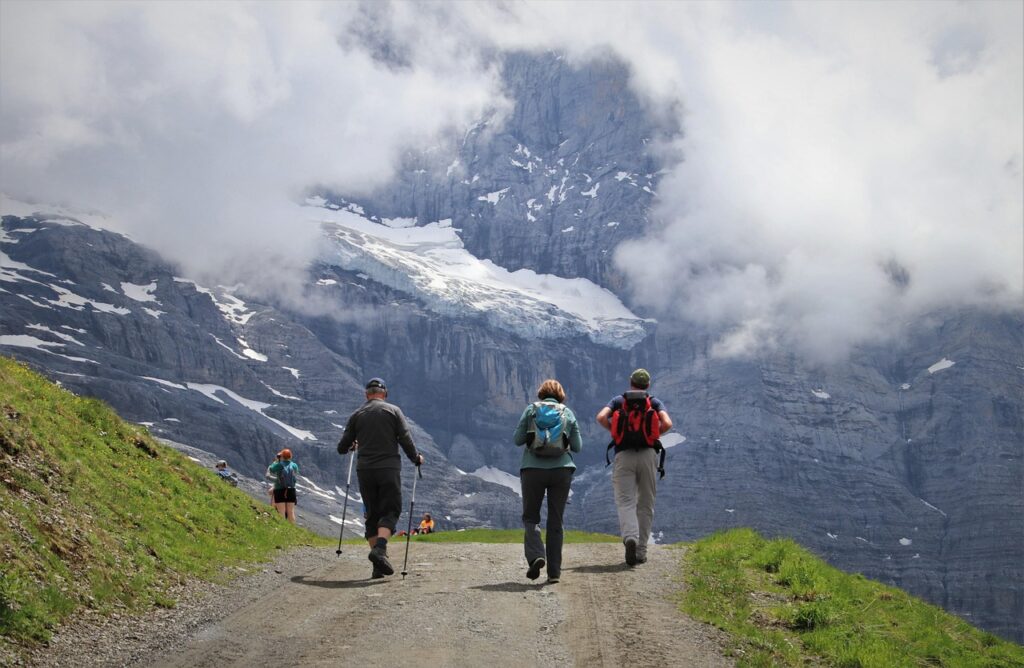Trekking: A Journey into Nature’s Wonders
Trekking is one of the most rewarding adventure activities that allows you to explore nature, challenge yourself physically, and experience breathtaking landscapes. Whether you’re hiking through dense forests, climbing rugged mountains, or walking along scenic trails, trekking offers an unmatched sense of adventure and serenity.
History of Trekking
Trekking has been an integral part of human exploration for centuries. Ancient civilizations used trails to traverse mountains and forests for trade and communication. Over time, trekking evolved into a recreational activity, with mountaineers and adventurers seeking new challenges in unexplored territories. Today, trekking is a globally popular activity that promotes both physical fitness and a deep connection with nature.
Types of Trekking
- Day Treks: Short, single-day hikes that do not require overnight stays, ideal for beginners.
- Multi-Day Treks: Extended hikes that involve camping or staying in mountain lodges.
- High-Altitude Treks: Challenging routes that take trekkers to altitudes above 3,000 meters, requiring acclimatization and endurance.
- Snow Treks: Conducted in snowy landscapes, requiring special gear and preparation.
- Jungle Treks: Trails passing through dense forests, offering encounters with diverse flora and fauna.
- Pilgrimage Treks: Religious treks leading to sacred sites, such as the Char Dham Yatra in India.
Best Trekking Destinations in the World
- Everest Base Camp, Nepal: A legendary trek offering stunning views of the world’s highest peak.
- Inca Trail, Peru: A historic trek leading to the ancient city of Machu Picchu.
- Torres del Paine, Chile: A breathtaking route through Patagonia’s rugged landscapes.
- The Alps, Europe: Iconic treks across Switzerland, France, and Italy.
- Grand Canyon, USA: Scenic trails showcasing unique rock formations and stunning vistas.
Best Trekking Locations in India
India offers an incredible variety of trekking destinations, catering to all levels of trekkers. Some of the most popular trekking routes include:
- Roopkund Trek, Uttarakhand: Known for its mysterious skeletal lake and stunning Himalayan views.
- Valley of Flowers, Uttarakhand: A UNESCO World Heritage site with vibrant alpine meadows.
- Hampta Pass, Himachal Pradesh: A crossover trek between lush Kullu Valley and arid Spiti Valley.
- Markha Valley Trek, Ladakh: A high-altitude desert trek with stunning views of Ladakh’s rugged terrain.
- Kedarkantha Trek, Uttarakhand: A perfect winter trek offering snow-covered landscapes.
- Dzükou Valley, Nagaland: A hidden gem in Northeast India with lush green valleys and seasonal flowers.
- Rajmachi Trek, Maharashtra: A historical trek near Mumbai and Pune, perfect for monsoon season.
Trekking Procedure in India
- Planning & Registration: Choose a suitable trek and register with a trekking agency if required.
- Training & Preparation: Beginners should focus on physical fitness and basic trekking skills.
- Packing Essential Gear: Carry trekking shoes, appropriate clothing, sleeping bags, and a first aid kit.
- Acclimatization: High-altitude treks require time to adapt to lower oxygen levels.
- Start the Trek: Follow designated trails, take breaks, and enjoy the journey.
- Completion & Return: Safely complete the trek and descend to the base camp or starting point.
Age Limit and Eligibility Criteria
- Minimum age: Usually 12-16 years, depending on the difficulty level.
- Fitness Level: Trekkers should have a moderate to high fitness level, especially for challenging routes.
- Medical Conditions: Those with heart conditions, asthma, or severe joint issues should consult a doctor before trekking.
Safety Measures
- Follow Marked Trails: Straying from designated paths can be dangerous.
- Stay Hydrated and Eat Well: Proper nutrition and hydration are essential for endurance.
- Carry a First Aid Kit: Be prepared for minor injuries, altitude sickness, or insect bites.
- Check Weather Conditions: Avoid trekking in extreme weather to ensure safety.
- Travel in Groups: Trekking with a group or guide is safer than going solo, especially in remote areas.
Why Try Trekking?
- Reconnect with Nature: Escape urban life and immerse yourself in pristine landscapes.
- Physical and Mental Health Benefits: Improves cardiovascular fitness, strength, and mental well-being.
- Sense of Achievement: Completing a trek gives a profound sense of accomplishment.
- Cultural Exploration: Trekking allows you to interact with local communities and experience diverse cultures.
- Affordable Adventure: Compared to other extreme sports, trekking is relatively budget-friendly.
- Photography Opportunities: Capture stunning landscapes, wildlife, and unique terrains.
Preparing for Your First Trek
- Choose an easy trek to begin with and gradually take on more challenging routes.
- Invest in quality trekking gear, including sturdy shoes, a comfortable backpack, and weather-appropriate clothing.
- Train your body by incorporating cardio and strength exercises into your routine.
- Research the trek to understand the terrain, climate, and difficulty level.
- Pack light but ensure you have all essentials like water, snacks, and emergency supplies.
Final Thoughts
Trekking is an incredible way to explore the world while pushing your physical and mental limits. Whether you’re scaling high-altitude peaks or walking through scenic valleys, every trek offers a unique and memorable experience. If you’re an adventure enthusiast looking for your next challenge, trekking should be at the top of your list. Ready to hit the trail?

